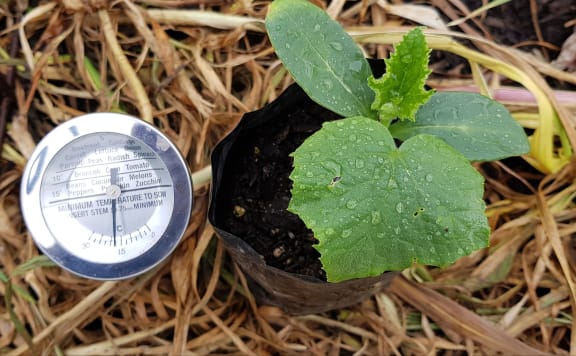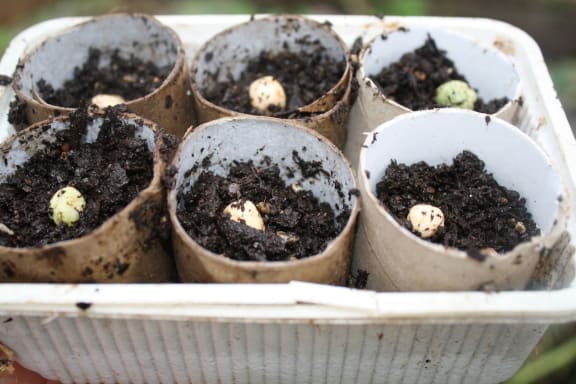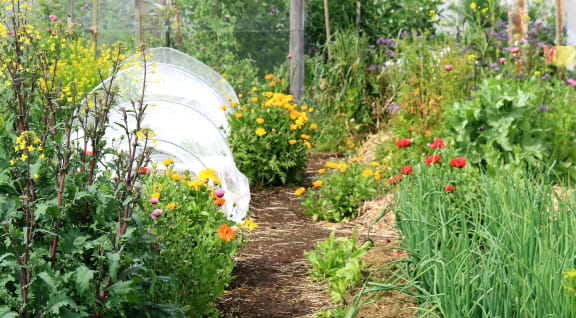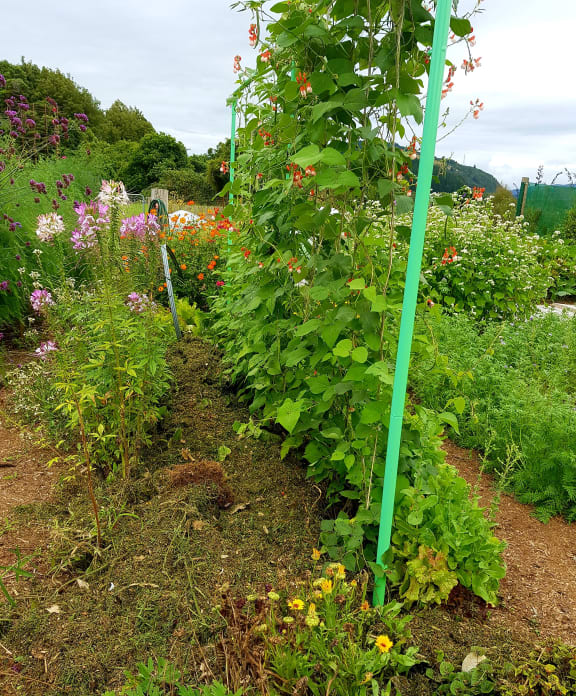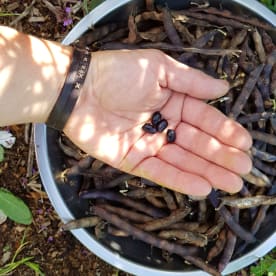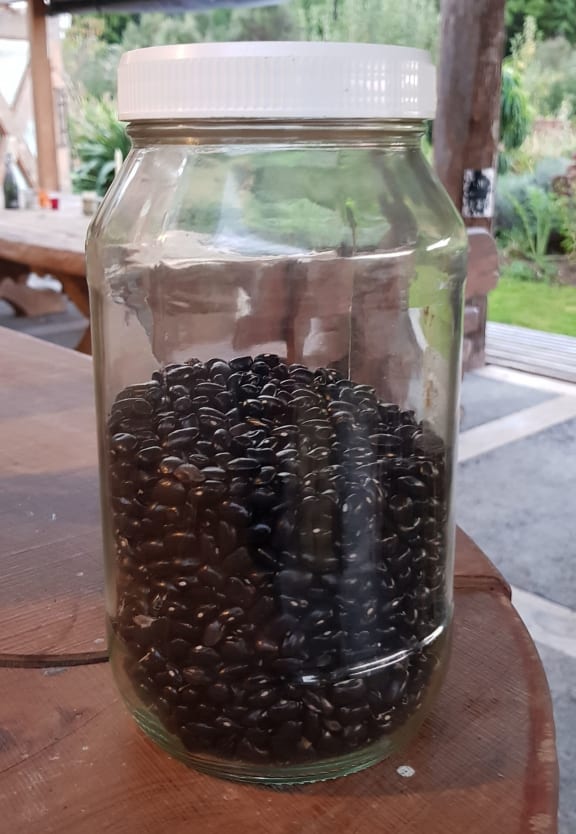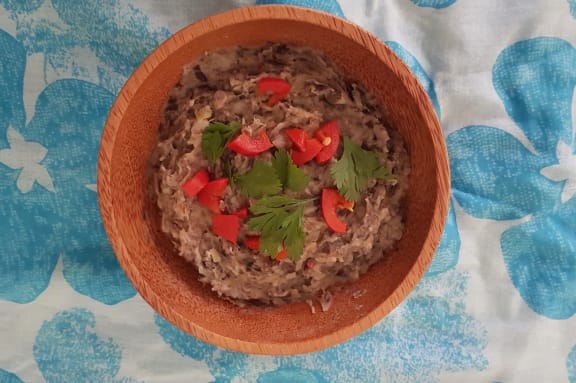Otaki-based organic gardener, Kath Irvine has been growing all the vegetables to feed her family of 6 for a couple of decades now. She joined Kathryn Ryan to share advice to prepare for when the season changes.
She recommends a soil thermometer – plant when the temperature is right for a particular crop, not just because we have the long weekend coming up.
Kath’s tips for a healthy garden
Look after the soil
“I think the most important place to start is to really know what you got, what you're dealing with: are you on clay? Are you on sand? The great news, there is one gift to all soils and that’s compost,” she says.
Avoid over-feeding
“Home gardeners need to be a little bit cautious because they’re terrible at over feeding their soil, and the more you over feed your soil, the more, lush sweet growth you get on your plants and who loves that? Aphids, thrips and scale.”
Don’t dig it
“Nature's got it covered totally, below the soil is so organized and all the biology and all these different guilds basically is a giant top-soil-making machine, so the more we can clip into that system, the less work we actually have to do."
Harness micro-organisms
“There is a product I really love called EM it's a liquid (effective microorganisms) and you pour it on with your watering can and really start to get that biology going. And I use that every month over my whole garden
“What I’ve gradually evolved towards as this biological way of gardening and that's about all the minerals. And now we're really lucky because we're starting to see full-spectrum mineral fertilizers coming in on the market, so the home gardener can access them. There's a really neat company up north doing product FODDA and they are recycling carp, from the Waikato waterway, it's tested, scientifically tested for full minerals. It's a brilliant product.
“To create a really great environment, if you're on clay, aerate your soil first and that's simply pushing a fork in and pulling it back not actually turning it over. And you get the air in then spread a thin layer of composi - we don't want to be knee-deep in the stuff we can help it, so maybe a couple of centimetres at the most and then add you full-spectrum mineral fertilizer and then plant and mulch on top of that. And your liquid feed is awesome is a soil drench before you plant and thereafter in a regular fashion throughout your garden so once a month."
Check the temperature
“Nature’s really finely tuned to temperature, everything happens at a specific moment. So beans germinate at 15 degrees, if you pop them in and it's colder than that, even one degree, they'll just rot they won't come up.
“I love a soil thermometer, they’re really cheap.
“Right now we're in the shoulder season, my garden at the moment is sitting up 14 degrees. So I know it's too early to put my cucumbers or my tomatoes out, you just you want to hit that sweet spot because your plants all have specific needs and then when that that particular microclimate of your garden and the needs of your plants meet, boom, you've got your grow on.
What’s the right temperature?
“Fifteen and up for your beans, warmer still for tomatoes and a little bit warmer still for peppers. So I wait till 18 degrees to get my tomatoes going.”
Crop rotation
“I'm a huge fan of green cropping: lupins, mustard things that you're sewing prior to heavy feeding crops like tomatoes, pumpkin and zucchinis. It’s an awesome way to build fertility and soil life because soil life attaches to your plant roots.
“The value of the green crop is that the whole thing is returned to the garden. So I use the green crop tops as mulch for the next crop.
“The basic rhythm of my crop rotation is I'll put a green crop and first and I really recommend it as a way to start a new raised bed if you've put fresh soil and just to bring the biology in I'll have a green crop first, then a heavy feeder followed by a light feeder which was basically root crops and legumes and then followed by green crop again.”
What to plant right now
“Leafy greens now are really a go and carrots and beetroots, we can be getting those in it's probably a little bit early down this the end of the island for planting out Summer stuff and this weekend that's going to test everybody's fortitude, because there's going to be tomatoes and chilies and all that in the garden centres and the supermarkets. If your soil’s not ready just wait.
“You'll find that the ones you plant in December will probably end up at the same place as the ones that have struggled through October and November’s cold stuff."
Build your garden slowly
“I like to say give yourself five years from scratch to build this kind of a system. So what I'm really interested in is sort of a low input, but a really robust, hearty garden. And that takes time. It's about the combination of plants. It's about mulching, it's about not actually letting your weeds get away you know, we just create a rod for our back when we let them get away and then you've got to do that big weed rip out and it's terrible for your soil.
“So a little and often approach with care is better. Keep on top of your weeds, keep mulching rotate your crops, So it's a lot of stuff coming together.
“The cool thing about biological gardening is that you build this strong system and you know how saying before when you overfeed, you are really drawing in those sucking pests the cool thing is, is the more balanced your fertilizing, and the stronger your system, the less and less pests and less disease you have to face.”
You can get more gardening advice on Kath’s Edible Backyard website
